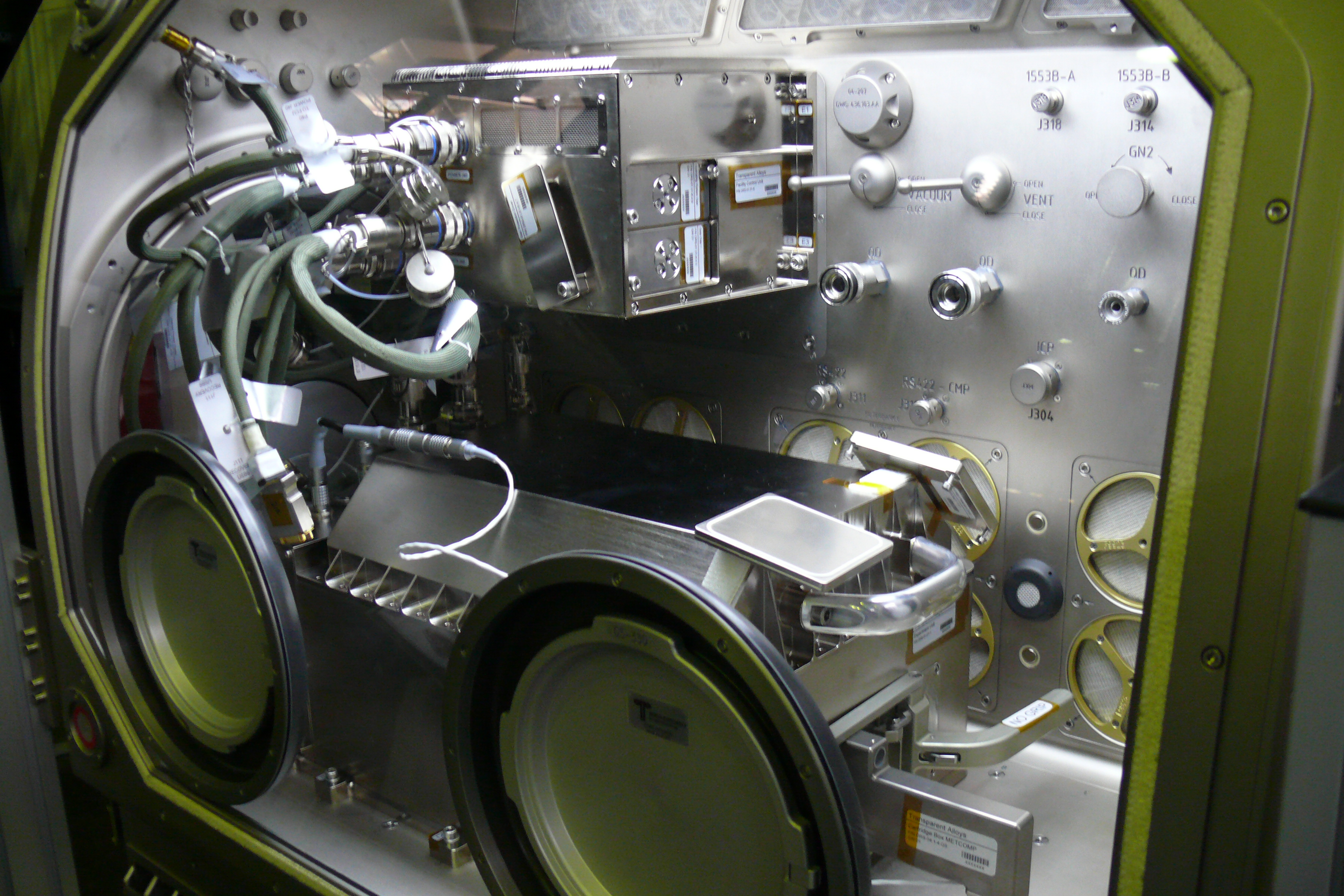Transparent Alloys
Transparent Alloys is a research European Space Agency (ESA) project on Material Science performed in the Microgravity Science Glovebox (MSG), a National Aeronautics and Space Administration (NASA) facility on the International Space Station (ISS). A set of 5 experiments takes place in Transparent Alloys to improve the understanding of melting-solidification processes in plastics, which usually serves to gain experience on physical phenomena which involved metallic alloys processing. Five experiments are to use the instrument to obtain their specific scientific goals:
- Solidification along an Eutectic Path in Binary Alloys (SEBA)
- Solidification along an Eutectic Path in Ternary Alloys (SETA)
- Metastable Solidification of Composites: Novel Peritectic Structures and In-situ composites (METCOMP)
- Columnar to Equiaxed Transition in Solidification Processing 1&2 (CETSOL 1&2)
Significant Dates
Mission Space X 13: Transparent Alloys launch
Experiment/payload description and objectives
The ISS microgravity condition allows Transparent Alloys to study three dimensional phenomena no affected by natural convection, thus that only the solidification process it developed under purely diffusive conditions.
The instrument is a Bridgman Furnace that permits the monitoring and control of solidification-melting processes in plastic samples confined in experimental cartridges on micro-scale resolution. These recipients are positioned and can be translated between clamps, whose temperatures can be selected. Temperature setting aims to achieve a desired thermal gradient in the adiabatic zone where the solidification takes place.
Different goals are distinguished attending to each experiment:
Source: NASA
SEBA
- Study the formation and relaxation of defects in rod-like structures, and the transition rod-to-lamellar in eutectic growth patterns.
- The analysis of forcing effects due to the thermal gradient.
SETA
- Observation of the microstructure formation to analyze different aspects.
- Improve and validate numerical simulations of the eutectic microstructure formation in a ternary alloy using the in-house phase-fields code MICRESS.
METCOMP
- Study the influence of gravitational effect on the microstructures evolution and determine microstructure selection maps, correlated to particle size, growth dynamics and fluid flow processes parameters.
- Improve the control of peritectic solidification of industrial relevance.
CETSOL 1&2
- Investigate the time-dependent solidification rate in columnar and equiaxed regimes, including the temperature gradient and the temperature of the solid/liquid interface.
- Study the occurrence of nucleation events and mechanism of fragmentation.



